From 2011 to present, the Thang Long – Hanoi Heritage Conservation Center has coordinated with the Institute of Archeology (Vietnam Academy of Social Sciences) and the Vietnam Archaeological Association to conduct excavations and archaeological research. archeology in the Central area (King Thien Main Palace area) with a total area of more than 10,000m 2 . The excavations have achieved great results in understanding the values of the World Heritage Site of Thang Long Imperial Citadel Central Area – Hanoi and at the same time obtained many new highly authentic documents that contribute to research. and restored Kinh Thien Main Palace.
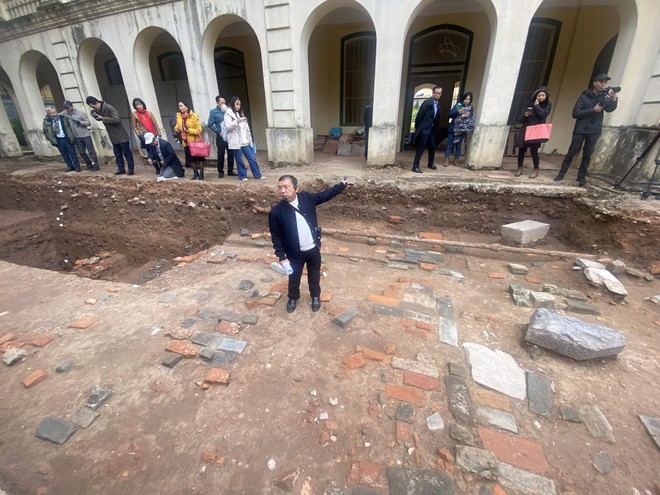 |
| Associate Professor, Dr. Tong Trung Tin, Chairman of the Vietnam Archaeological Association, reports on the excavation process and architectural vestiges found |
In June 2023, the Thang Long – Hanoi Heritage Conservation Center coordinated with the Institute of Archeology to conduct exploratory excavations in the northeastern area of the Kinh Thien Palace foundation relic with a total area of more than 1,000 square meters. at 3 locations; Department of Operations, Kinh Thien and Hau Lau Palace grounds.
In the excavation holes, some fragments of Dan Tri yard as well as traces of Ngu Dao were revealed following the results of the excavation in 2022, the architectural foundation of the Ly Dynasty. Along with that are architectural traces of the Nguyen Dynasty (XIX – XX centuries), the Le Trung Hung Dynasty (XVII – XVIII centuries) and the Early Le Dynasty (XV – XVI centuries).
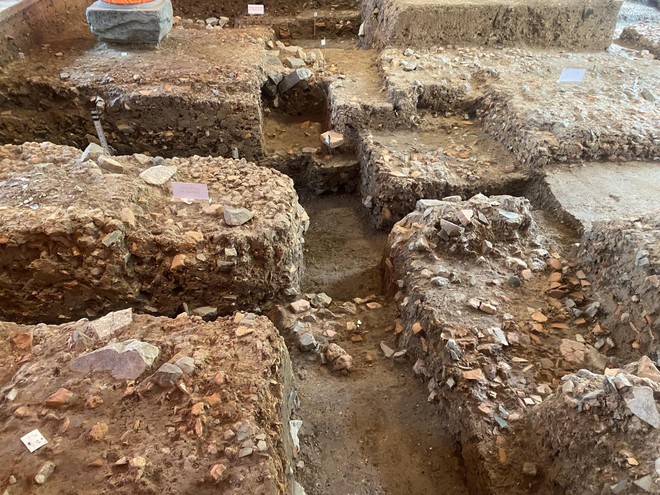 |
| Excavation pit at the foundation of Kinh Thien Palace |
According to Associate Professor Dr. Tong Trung Tin, Chairman of the Vietnam Archaeological Association, basically, the excavation provided two important information: The structure and foundation of Kinh Thien main palace during the Le Dynasty. and the Le Trung Hung period, 17th – 18th centuries. Location south of Hau Lau: Two layers of architecture have been revealed during the Le Trung Hung period (17th – 18th centuries) and the early Le (15th – 16th centuries). The Renaissance of the Le Dynasty and the Tran Dynasty (XIII-XIV centuries) included roads, brick foundations, column foundations, foundation bundles… These vestiges have a relationship with the vestiges excavated in 2021, related to palaces of many periods in this area.
 |
| Excavation pit at the foundation of Kinh Thien Palace |
In addition to architectural vestiges, the excavation also recovered many types of relics of bricks, tiles, glazed ceramics, and earthenware related to the architectural development and life of the Royal Palace here.
To promote the value of the monument, the Thang Long – Hanoi Heritage Conservation Center coordinated with the Institute of Archeology to select 2 typical excavation pits, accurately and vividly reflecting the vestiges of the Glass Main Palace. The Le dynasty will be displayed on-site to introduce to all people and tourists at home and abroad. This exhibition uses panels, video clips, and lighting systems to provide the shortest and most concise explanation of the process of building, forming, and destroying Kinh Thien Palace, as well as the research to reveal and recreate it. with 2D and 3D images of this important relic in recent years.
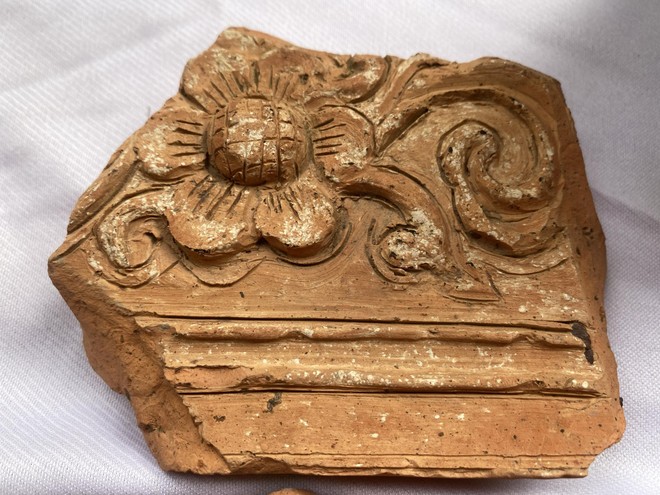 |
| Architectural materials found through excavations of the Imperial Citadel |
From 2011 to present, the Thang Long – Hanoi Heritage Conservation Center has coordinated with the Institute of Archeology (Vietnam Academy of Social Sciences) and the Vietnam Archaeological Association to conduct excavations and archaeological research. archeology in the Central area (King Thien Main Palace area) with a total area of more than 10,000m 2 . The excavation results have identified a rich system of relics and relics and initially identified a part of the architectural structure of the Kinh Thien Main Palace area during the early Le Dynasty (15th – early 16th century) and the early 16th century. Le Trung Hung (17th-18th centuries) includes Kinh Thien Main Palace, Ngu Dao, Dai Trieu yard, gates, walls and surrounding corridors. In particular, the excavation work in 2023 has achieved very positive results in identifying traces of Kinh Thien Palace.
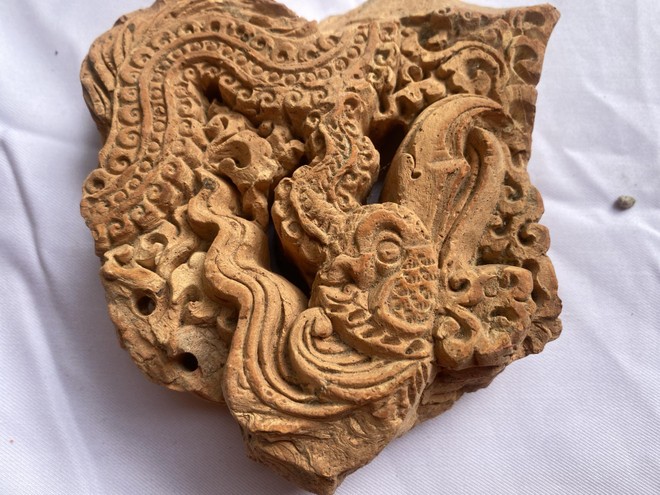 |
| A terracotta artifact of the Ly Dynasty with a Phoenix bird head motif |
Surveying at the excavation pit, the international team of experts from the World Heritage Center (UNESCO, ICOMOS) and domestic experts highly appreciated the fact that they could see with their own eyes that under the foundation of Kinh Thien Palace, the remains were still very well preserved. architectural vestiges of many historical periods. This is the scientific basis with high authenticity in the study of restoration/restoration of Kinh Thien main palace.
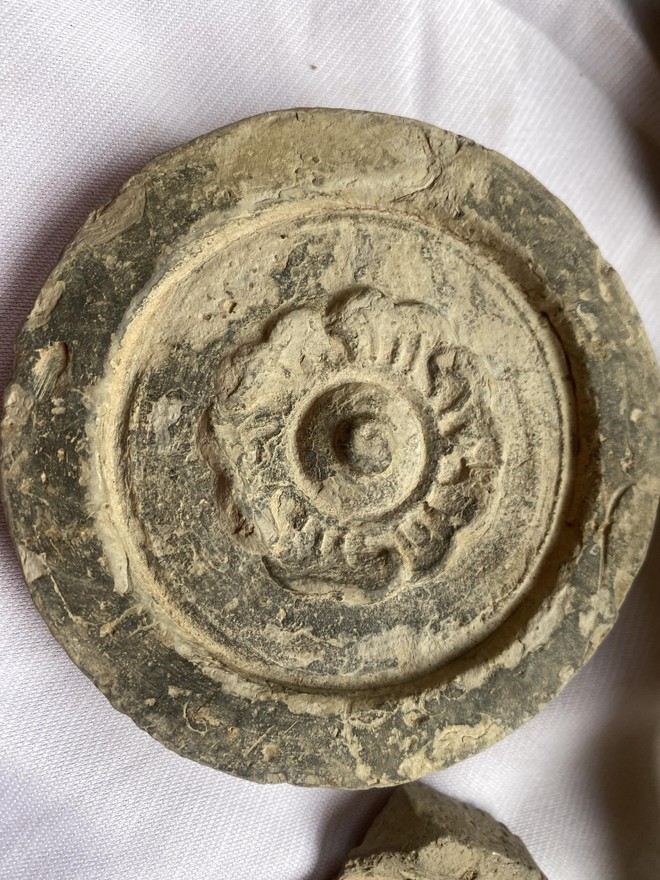 |
| Architectural materials found through excavations of the Imperial Citadel |
Mr. Nguyen Thanh Quang, Director of Thang Long Hanoi Heritage Conservation Center, said: According to the 2010 Commitment, Hanoi 2022 Communiqué (International Scientific Conference: “20 years of research, conservation and development” promoting the value of the Imperial Citadel World Heritage of Thang Long – Hanoi” September 2022), Recommendation 2023 and the results of archaeological excavations from 2011 – 2023, the Thang Long – Hanoi Heritage Conservation Center will coordinate with the Institute of Archeology to develop “Archaeological strategy in the Central Axis area of Thang Long Imperial Citadel” with the focus on Kinh Thien Main Palace and Kinh Thien Main Palace space. In addition, we will continue to research the Inner Palace area (behind Kinh Thien Palace) where the king worked daily.
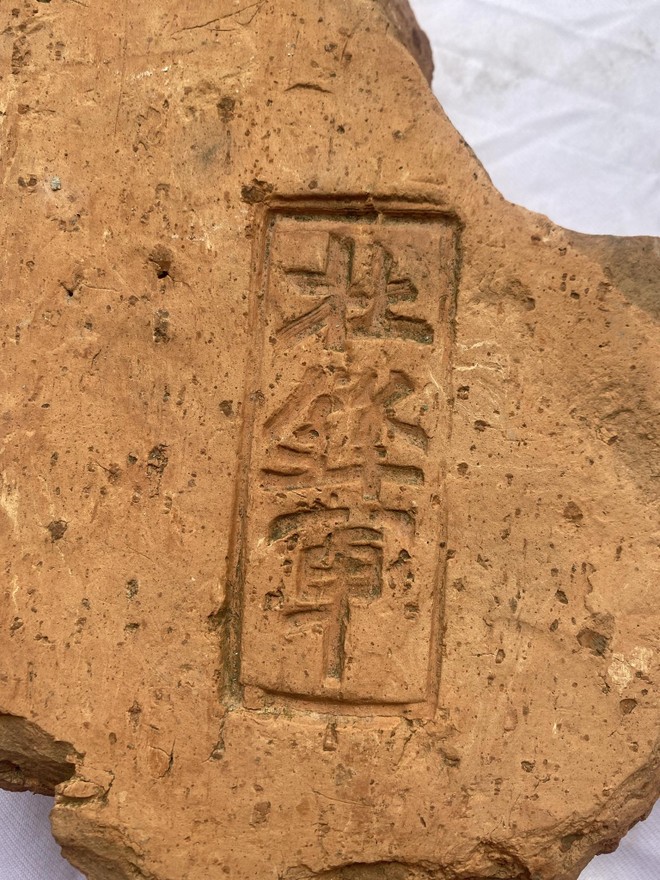 |
The results of archaeological research during this period play an important role in providing authentic bases for the strategy of heritage interpretation and towards the restoration of Kinh Thien Main Palace and the space of Kinh Thien Main Palace.





